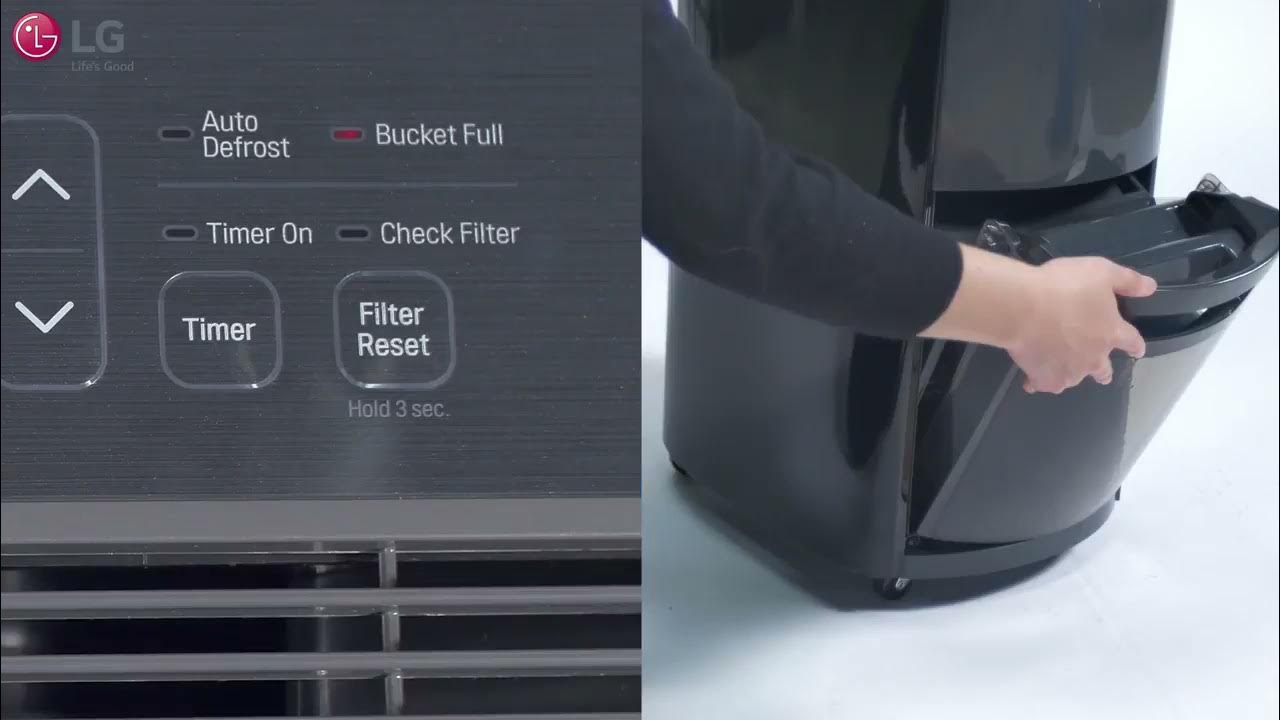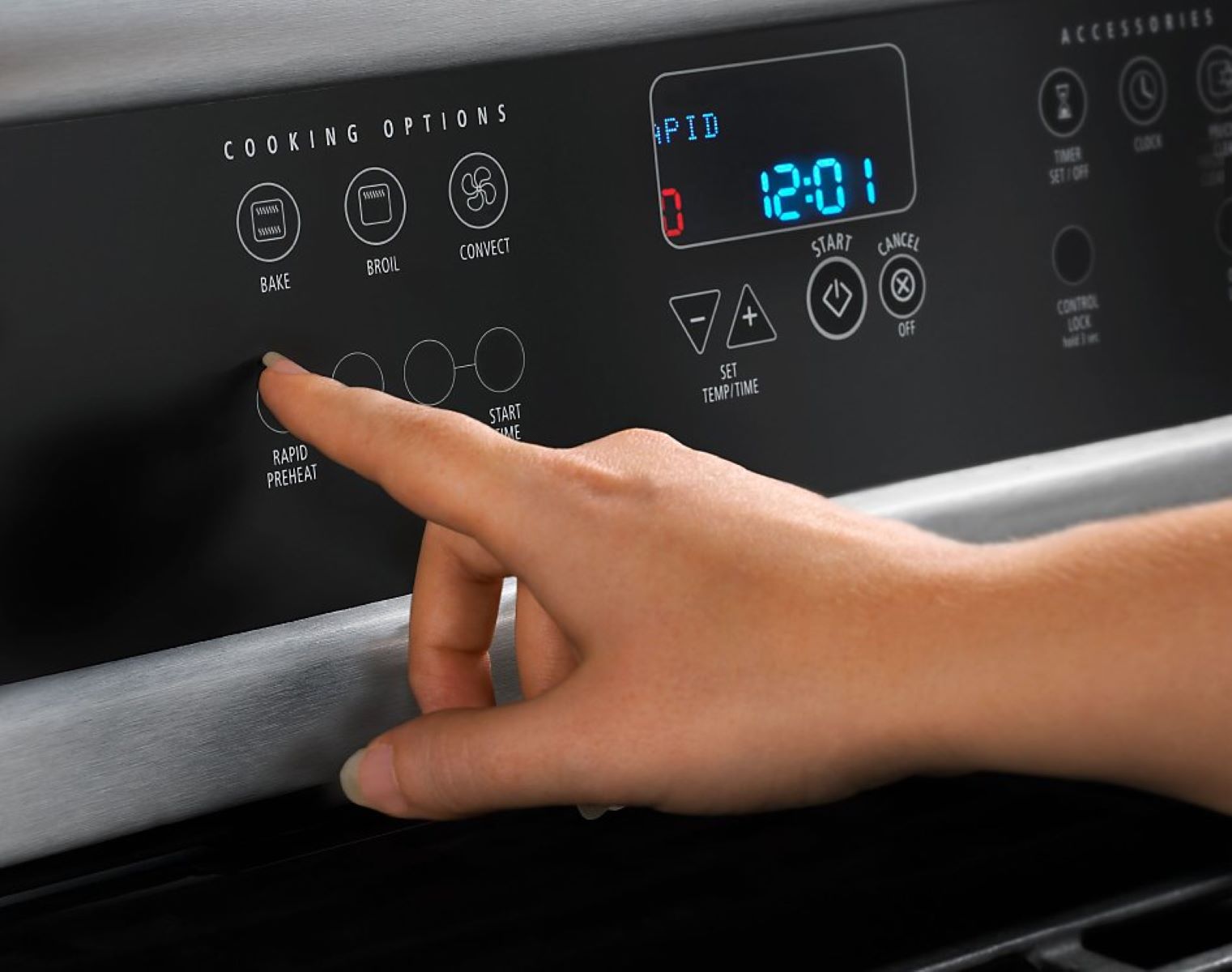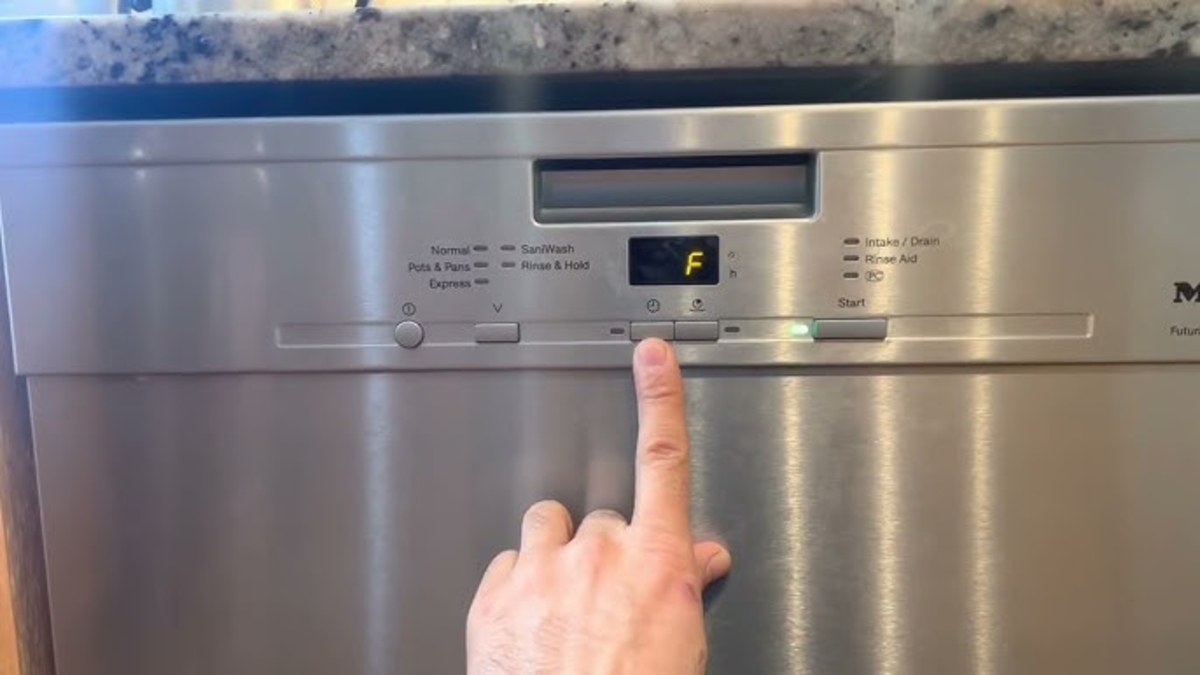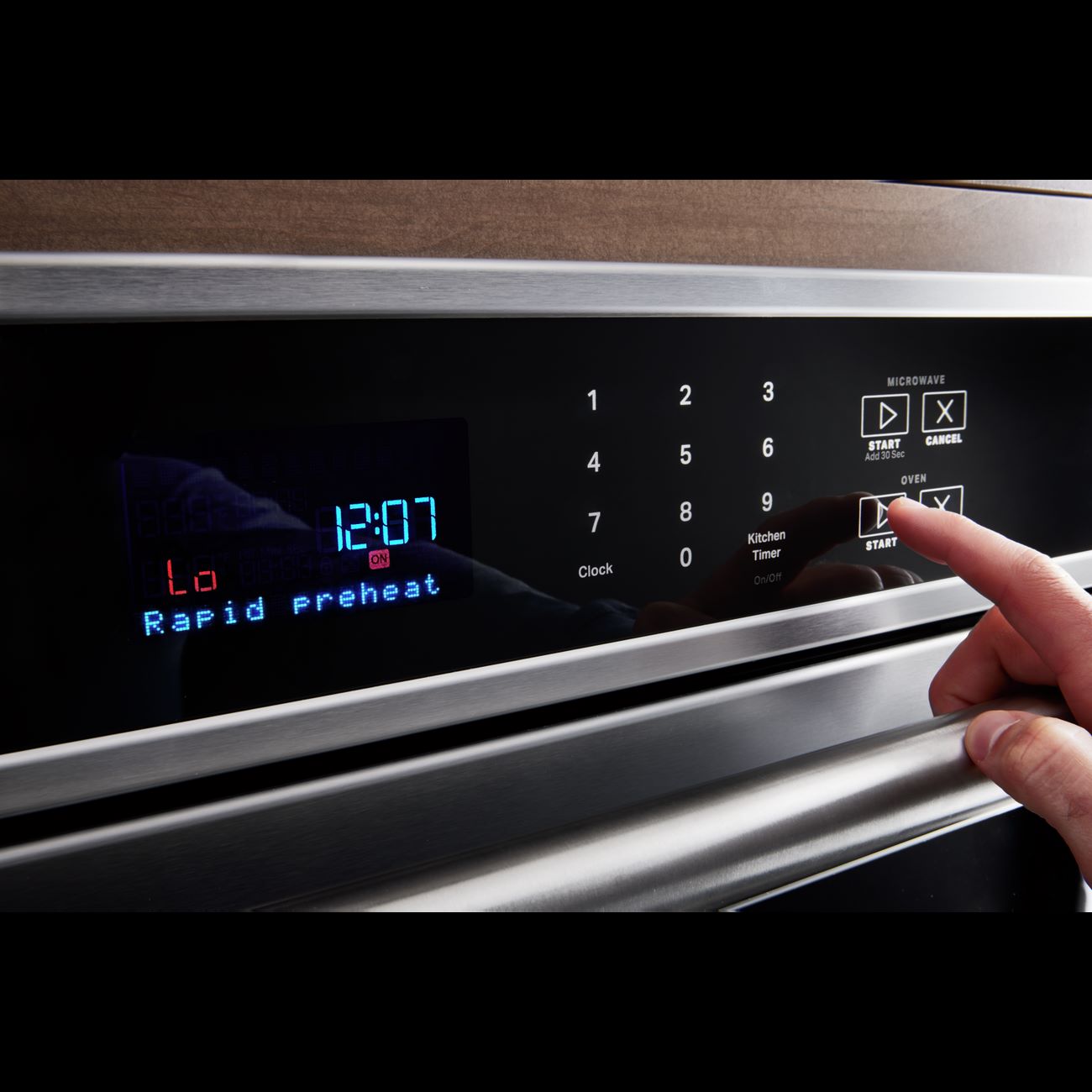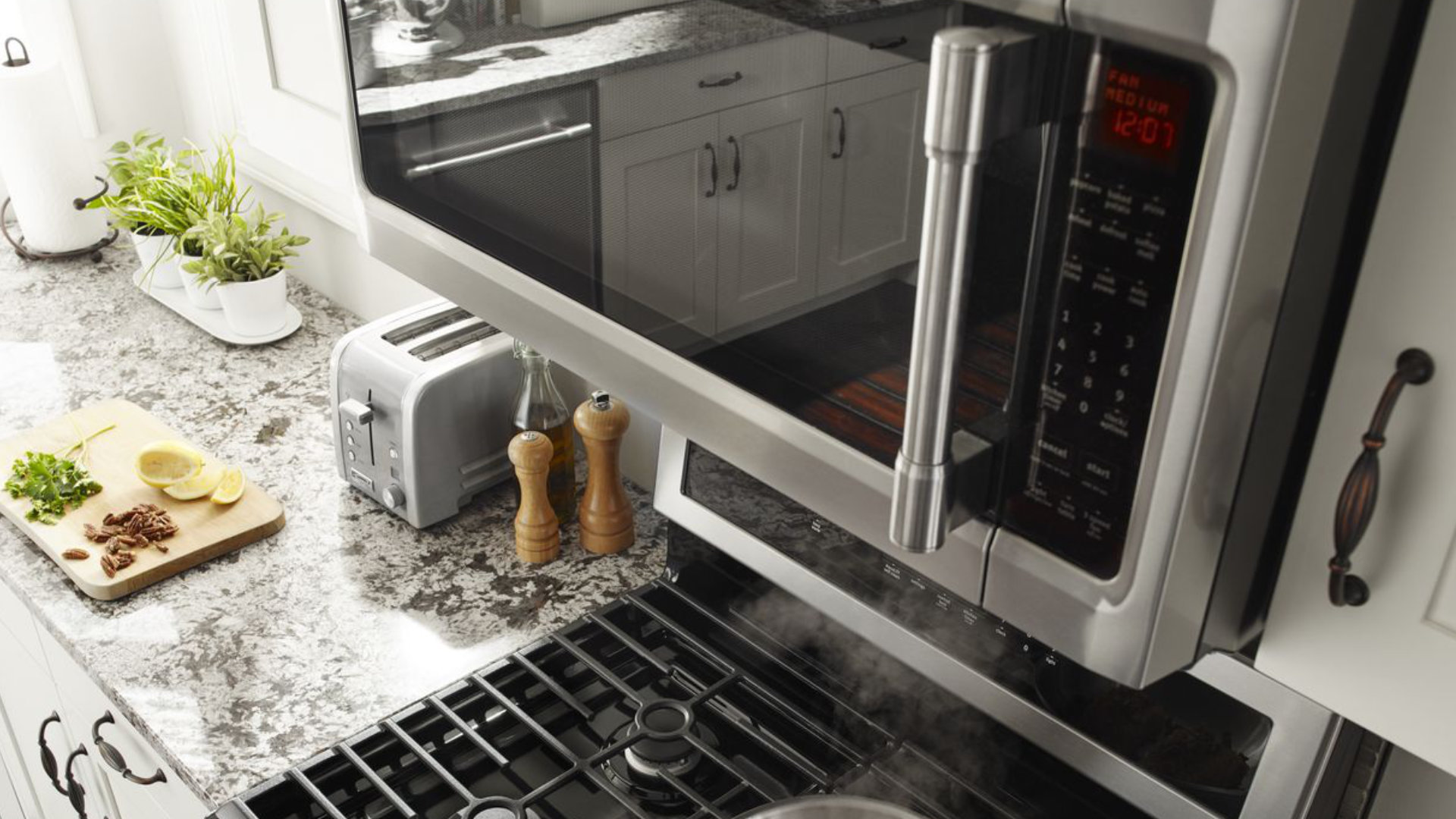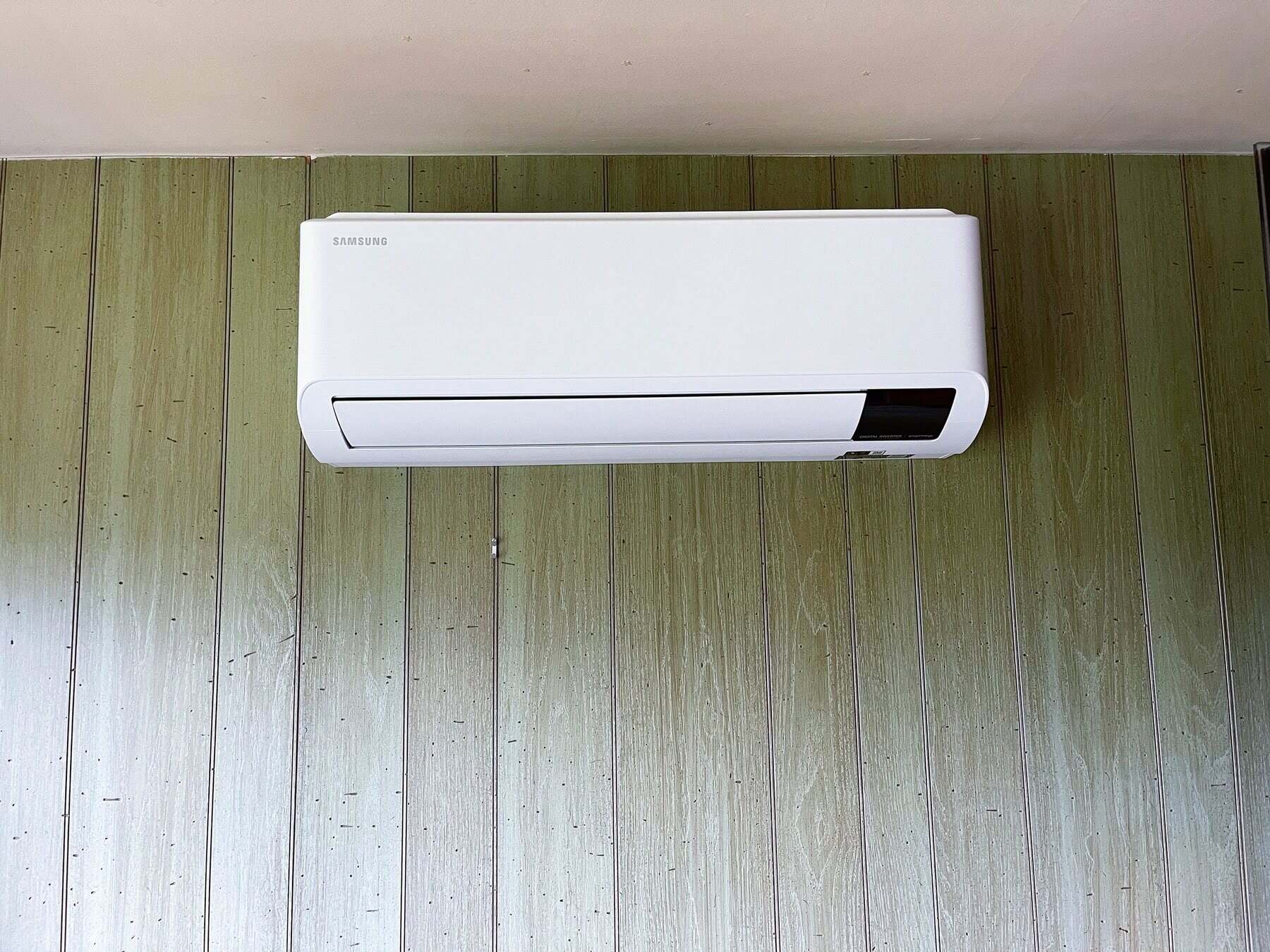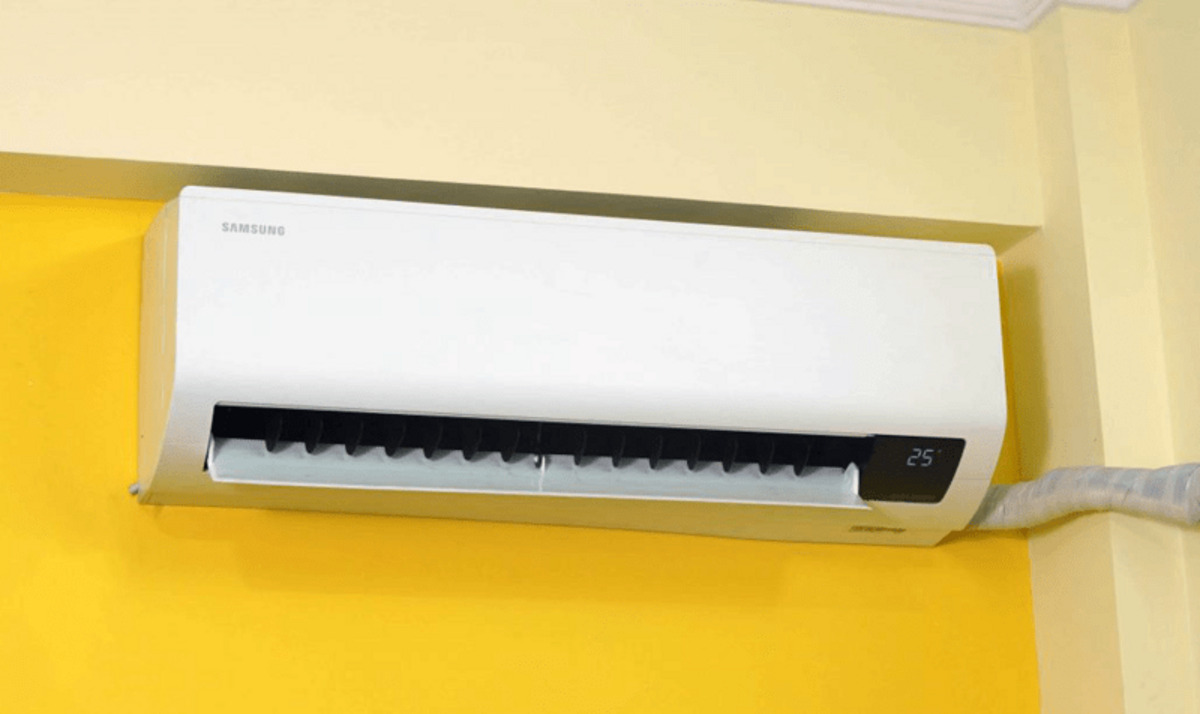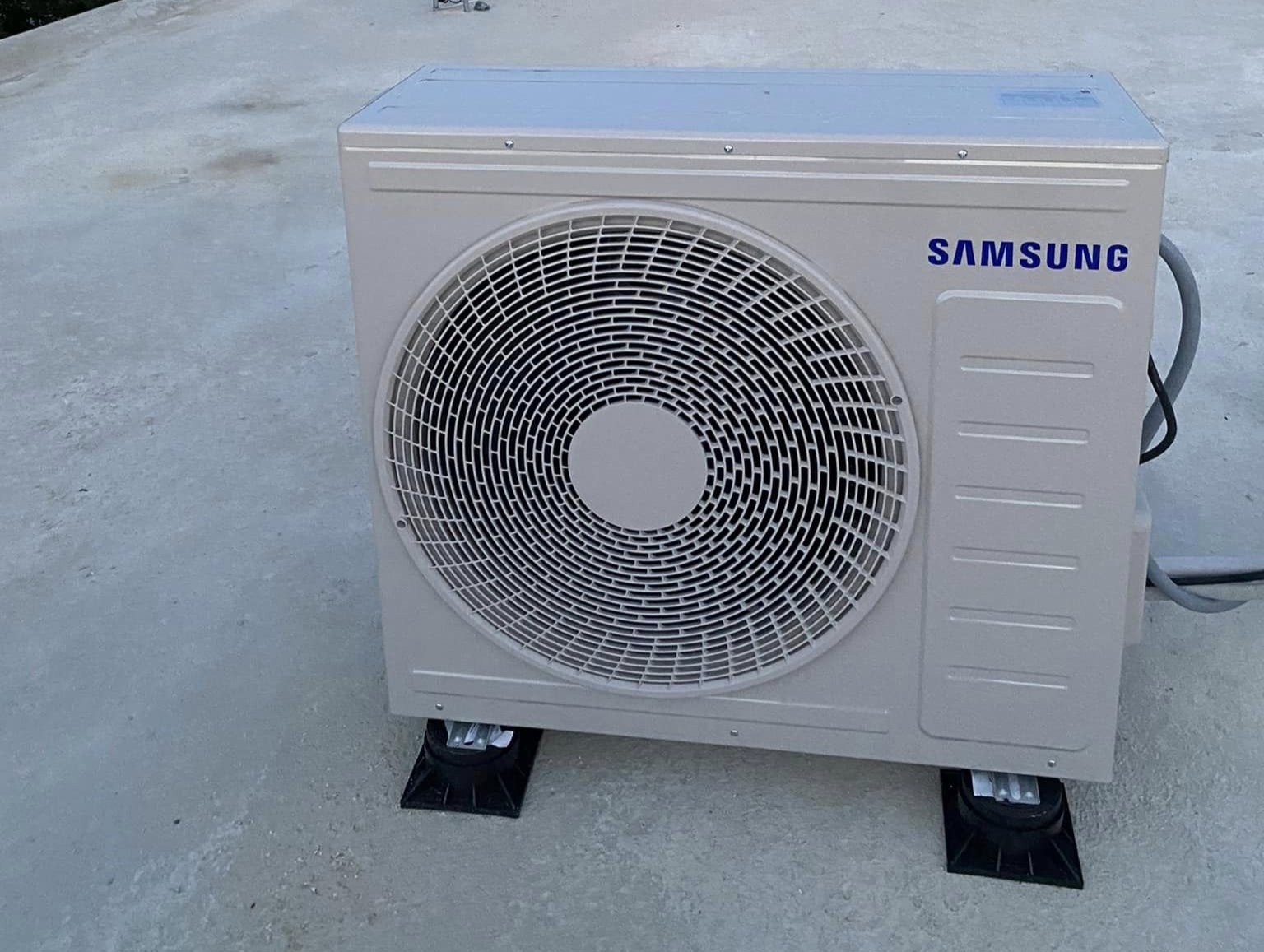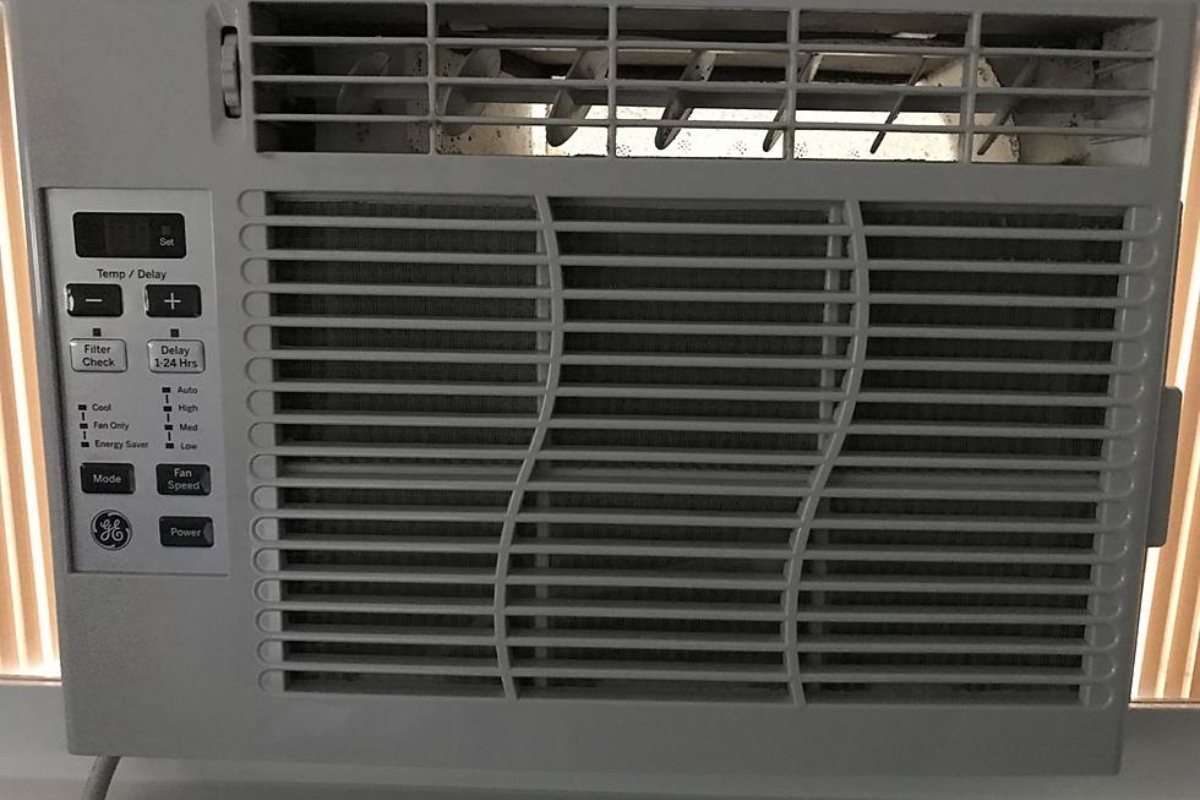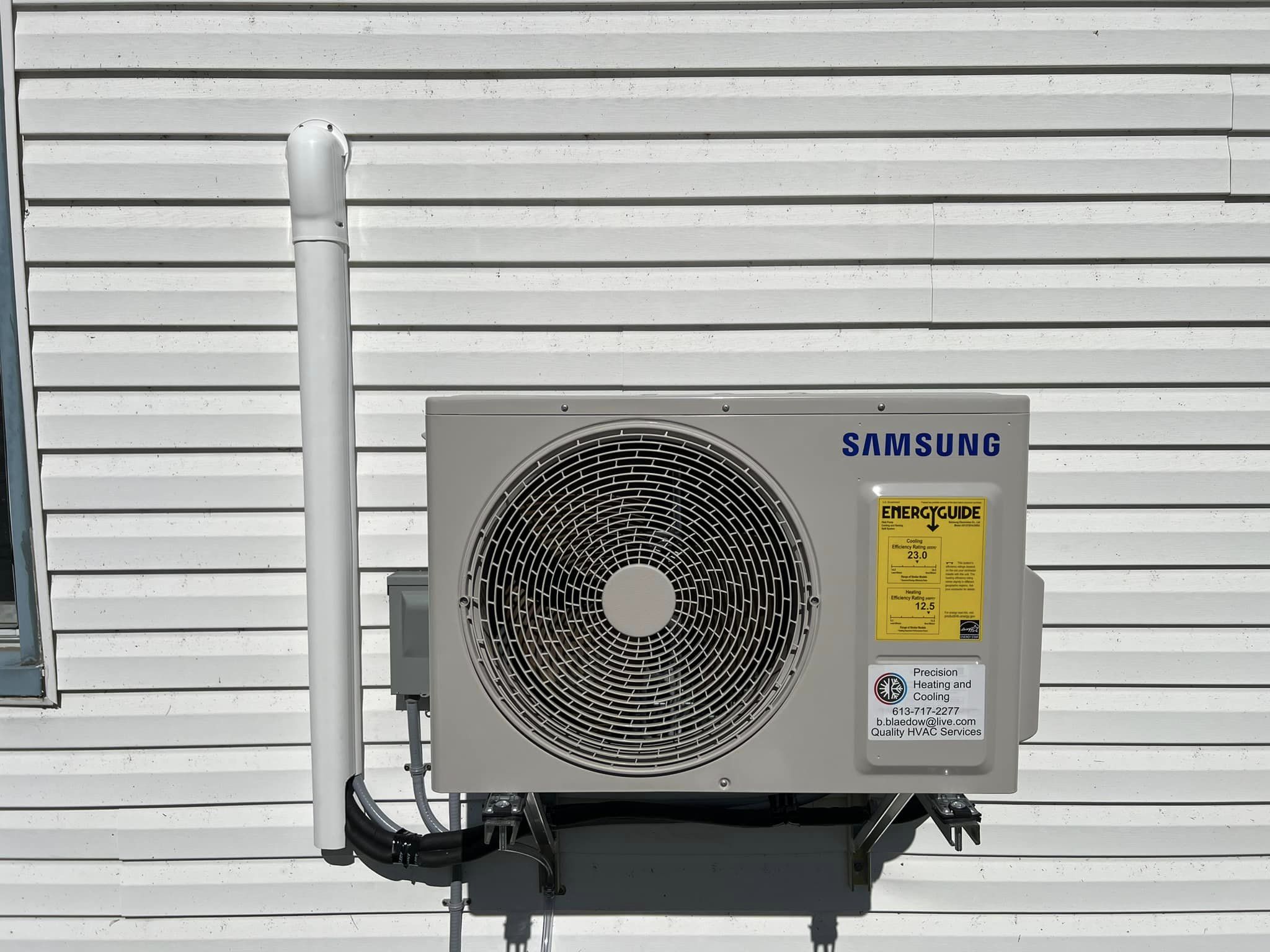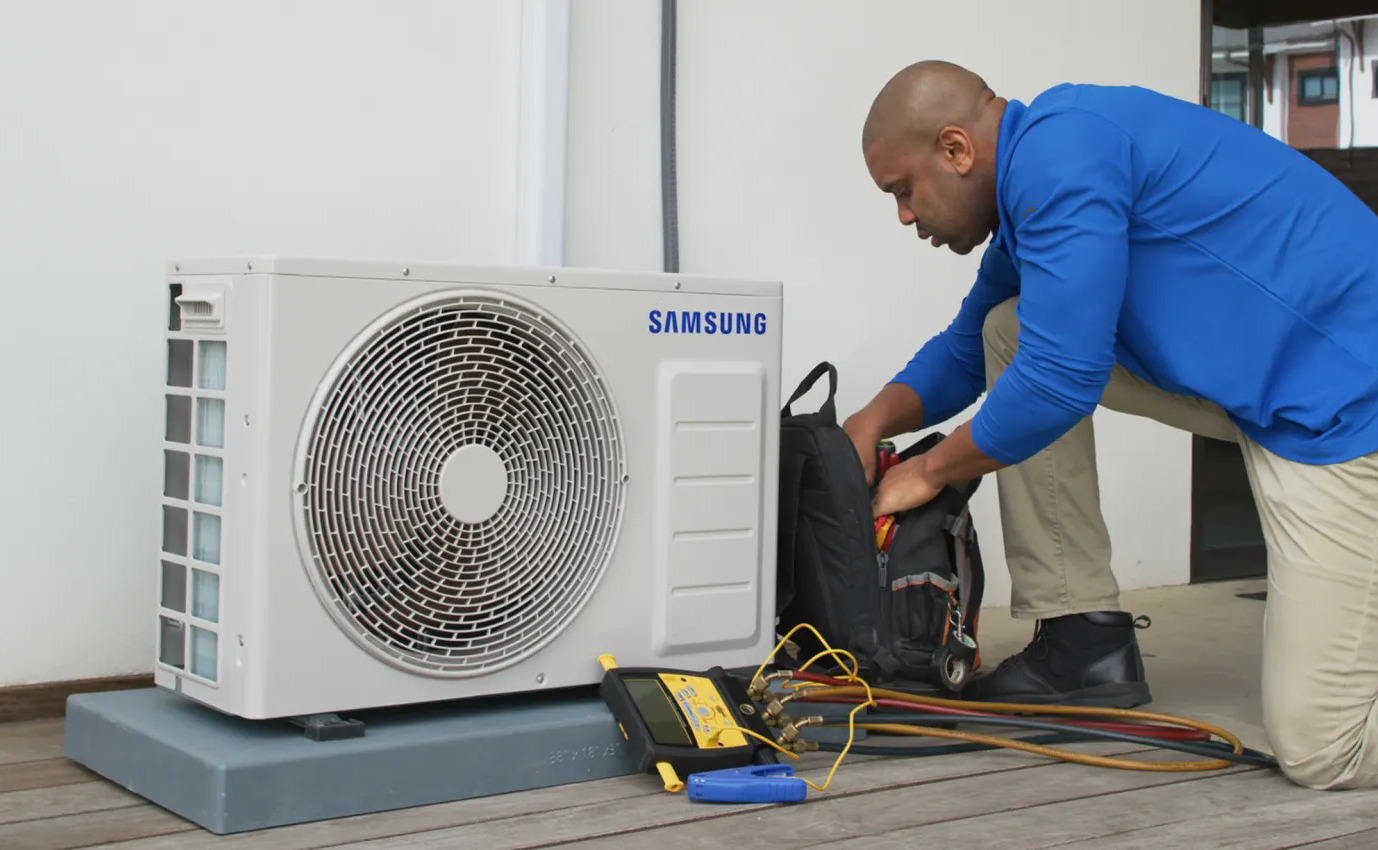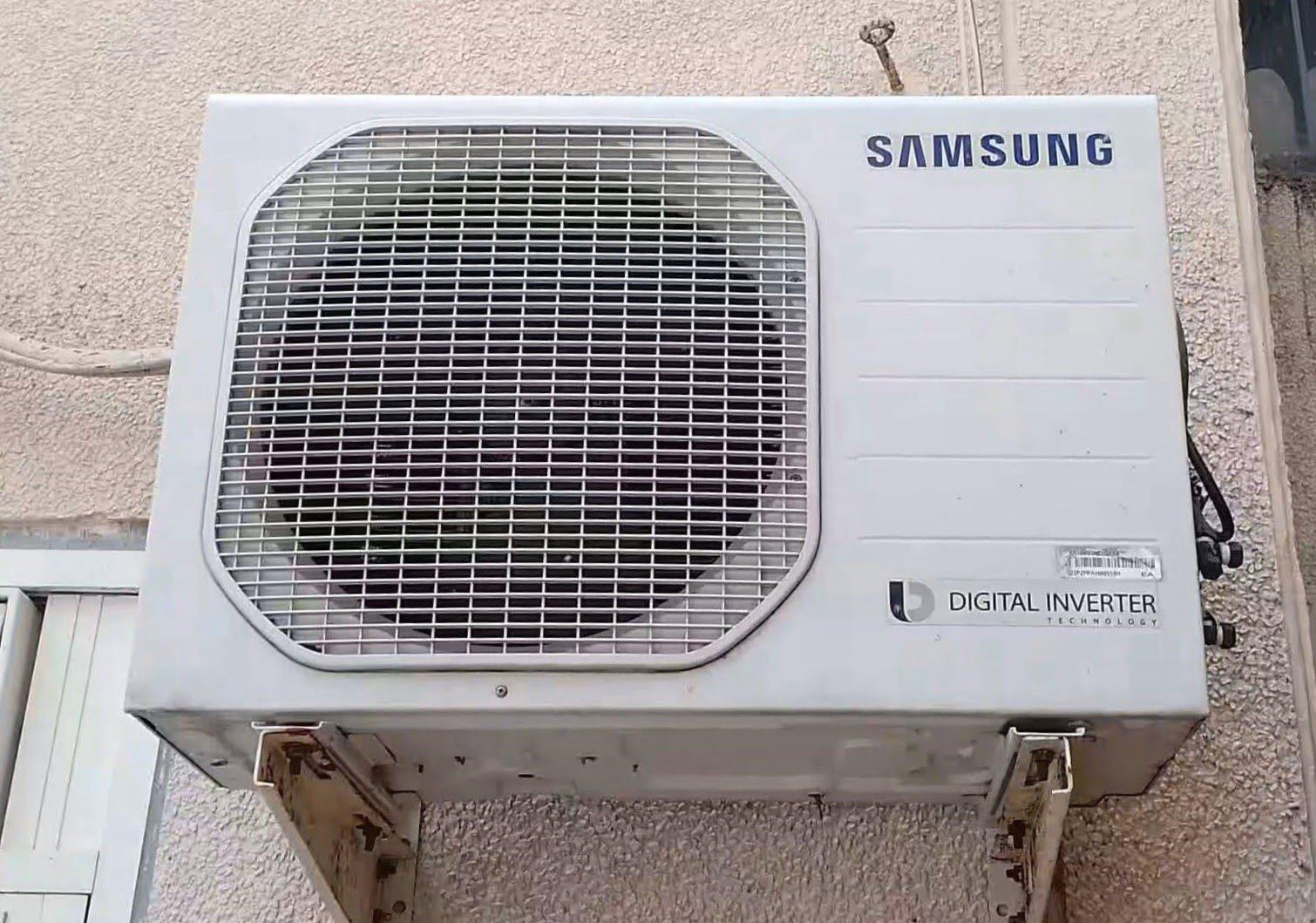Home>Home Maintenance>How To Fix E4 Error On A Portable Air Conditioner
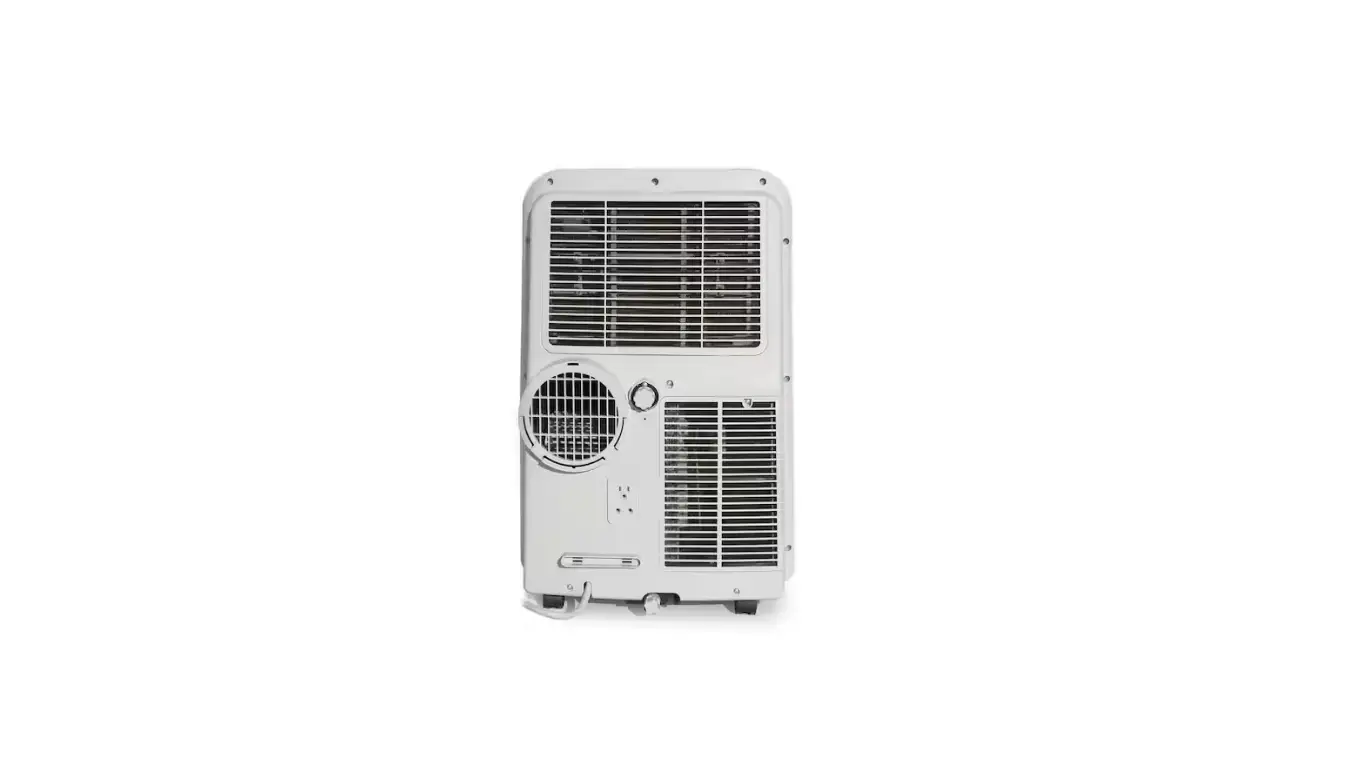

Home Maintenance
How To Fix E4 Error On A Portable Air Conditioner
Modified: August 17, 2024
Learn how to fix the E4 error on your portable air conditioner with our step-by-step guide. Keep your home cool and comfortable with proper home maintenance.
(Many of the links in this article redirect to a specific reviewed product. Your purchase of these products through affiliate links helps to generate commission for Storables.com, at no extra cost. Learn more)
Introduction
Welcome to the world of home maintenance! Taking care of your home can be a rewarding experience, but it also comes with its fair share of challenges. One such challenge is dealing with a malfunctioning portable air conditioner. If you’ve ever encountered an E4 error code on your unit, you may be wondering what it means and how to fix it.
In this article, we’ll delve into the details of the E4 error code and provide you with step-by-step instructions on how to troubleshoot and fix the issue. Whether you’re a seasoned DIY enthusiast or a beginner in the world of home maintenance, we’ve got you covered.
Understanding the E4 Error Code
The E4 error code is a common error that can occur on portable air conditioners. It typically indicates a problem with the unit’s airflow or temperature sensors. When the sensors detect an abnormal condition, the E4 error code is displayed on the unit’s control panel.
Possible Causes of the E4 Error
A variety of factors can trigger the E4 error code on a portable air conditioner. Some common causes include:
- Blocked or dirty air filters
- Obstructions in the air vents
- Malfunctioning condenser coils
- Issues with the drainage system
Now that we’ve covered the basics, let’s dive into the steps you can take to fix the E4 error on your portable air conditioner. Remember, safety should always be your top priority, so make sure to follow any safety guidelines provided by the manufacturer.
Key Takeaways:
- Keep your portable air conditioner running smoothly by regularly checking and cleaning the air filter to prevent the E4 error caused by airflow blockages and dirty filters.
- Ensure optimal cooling performance by inspecting and maintaining the air vents, condenser coils, and drainage system to troubleshoot and resolve the E4 error on your portable air conditioner.
Understanding the E4 Error Code
Before we start troubleshooting the E4 error on your portable air conditioner, it’s important to have a clear understanding of what the error code signifies. The E4 error code typically indicates an issue with the airflow or temperature sensors in your unit.
Airflow Sensor: The airflow sensor in a portable air conditioner measures the amount of air flowing through the unit. If there is a problem with the airflow sensor, it can lead to poor air circulation and inefficient cooling.
Temperature Sensor: The temperature sensor, also known as the thermostat, is responsible for detecting and regulating the temperature in the room. A malfunctioning temperature sensor can cause the air conditioner to inaccurately detect the room temperature, resulting in faulty cooling performance.
When the sensors detect an abnormal condition, such as a blockage in the air vents or a dirty filter, the E4 error code is triggered. The error code serves as a warning to alert you that there’s an issue with your air conditioner that needs attention.
By understanding the underlying causes of the E4 error, you’ll be better equipped to resolve it. Now, let’s move on to the steps you can take to fix the E4 error on your portable air conditioner.
Possible Causes of the E4 Error
When you encounter the E4 error on your portable air conditioner, there are several potential causes that you should consider. Understanding these causes will help you pinpoint the root of the problem and take the appropriate steps to fix it.
1. Blocked or Dirty Air Filters – One of the most common causes of the E4 error is blocked or dirty air filters. Over time, dust, debris, and dirt can accumulate on the filters, obstructing the airflow and compromising the unit’s performance. When the airflow is restricted, it triggers the E4 error. Regularly cleaning or replacing the air filters can help prevent this issue.
2. Obstructions in the Air Vents – Another possible cause of the E4 error is obstructions in the air vents. If the air vents are blocked by furniture, curtains, or other objects, the air circulation will be hindered, leading to overheating and triggering the error code. Ensure that the air vents are clear and unrestricted to allow the proper flow of air.
3. Malfunctioning Condenser Coils – The condenser coils play a crucial role in the cooling process of a portable air conditioner. If the coils are dirty or damaged, they can’t efficiently transfer heat, causing the unit to overwork and the temperature sensors to detect irregularities. Cleaning the condenser coils regularly can help prevent this issue.
4. Issues with the Drainage System – A faulty drainage system can also contribute to the E4 error. If the condensate drain line is blocked or the condensate pump is malfunctioning, it can result in water buildup and affect the air conditioner’s performance. Checking and clearing any clogs in the drainage system can help resolve this problem.
By identifying these possible causes, you can narrow down the issue and take appropriate action to fix the E4 error on your portable air conditioner. In the next section, we’ll walk you through the steps you can follow to troubleshoot and resolve the error code.
Steps to Fix the E4 Error on a Portable Air Conditioner
Now that we have a good understanding of the E4 error and its possible causes, let’s go through the steps to fix the issue and get your portable air conditioner up and running again.
- Check the Filter: Start by checking the air filter. Remove it from the unit and inspect it for any dust or debris buildup. If the filter is dirty, clean it or replace it with a new one as per the manufacturer’s instructions.
- Clean the Filter: If the filter is reusable, clean it thoroughly with mild soap and water. Allow it to dry completely before placing it back into the air conditioner. This step ensures unrestricted airflow, which can help resolve the E4 error.
- Check for Blockages in the Air Vents: Take a look at the air vents to ensure they aren’t obstructed by any furniture or other objects. Clear away any obstructions that could impede the airflow. This will allow the conditioned air to circulate freely, resolving the E4 error in some cases.
- Reset the Air Conditioner: Try resetting the portable air conditioner. Turn off the unit and unplug it from the power source. Wait for a few minutes, then plug it back in and turn it on again. This simple reset can sometimes clear minor glitches and resolve the error.
- Check the Condenser Coils: Inspect the condenser coils for any dirt or debris accumulation. If they appear dirty, use a soft brush or vacuum cleaner to gently clean them. Be careful not to damage the fins of the coils. Clean condenser coils can improve the cooling efficiency and resolve the E4 error.
- Inspect the Drainage System: Check the condensate drain line and condensate pump for any clogs or malfunctions. If necessary, use a small brush or compressed air to clear any blockages. Ensure that the condensate line is properly connected and draining water efficiently.
- Contact Customer Support if Necessary: If you’ve followed all the steps above and the E4 error persists, it may be time to reach out to the customer support of the air conditioner manufacturer. They can provide further guidance and assistance in troubleshooting and resolving the error.
By following these steps, you can effectively troubleshoot and fix the E4 error on your portable air conditioner. Remember to always refer to the manufacturer’s instructions for specific guidance on your unit. With a little bit of patience and effort, you’ll have your air conditioner working optimally again in no time.
Check the Filter
The first step in resolving the E4 error on your portable air conditioner is to check the air filter. The filter plays a crucial role in maintaining the air quality and airflow of the unit. Over time, the filter can become clogged with dust, dirt, and debris, obstructing the airflow and causing the E4 error to occur.
To check the filter, you’ll need to locate it on your portable air conditioner. Typically, the filter is located on the front or side of the unit. Consult the user manual or manufacturer’s instructions for specific guidance on your particular model.
Once you’ve located the filter, carefully remove it from the air conditioner. Take a close look at the filter and inspect it for any signs of dirt or clogging. If you notice a significant buildup of dust and debris, it’s likely the cause of the E4 error.
It’s important to note that some portable air conditioners have reusable filters, while others require replacement filters. If your unit has a reusable filter, follow the manufacturer’s instructions for cleaning it. Use a mild soap and water solution to gently wash away the dirt and debris. Allow the filter to dry completely before placing it back into the air conditioner.
If your unit has a replaceable filter, you’ll need to purchase a new filter that is compatible with your specific model. Refer to the user manual or manufacturer’s instructions for guidance on the correct filter type and installation process.
By checking and cleaning or replacing the filter, you can effectively remove any obstructions and improve the airflow of the portable air conditioner. This step may be enough to resolve the E4 error and restore the proper functioning of the unit.
Remember to perform regular maintenance on the air filter to prevent future issues. Cleaning or replacing the filter every few months, or as recommended by the manufacturer, will not only help keep the E4 error at bay but also ensure better air quality and cooling performance from your portable air conditioner.
Clean the Filter
After checking the filter and determining that it is dirty or clogged, the next step to fix the E4 error on your portable air conditioner is to clean the filter. A dirty filter can restrict the airflow and cause the unit to overheat, triggering the error code.
To clean the filter, you’ll need a few basic supplies such as a mild detergent, a sink or basin, and clean water. Follow these steps to effectively clean the filter:
- First, ensure that the portable air conditioner is turned off and unplugged from the power source. Safety should always be a priority when performing maintenance on electrical appliances.
- Locate the air filter on your portable air conditioner. Typically, the filter is located on the front or side of the unit. Consult the user manual or manufacturer’s instructions if you’re unsure about the exact location.
- Remove the filter from the air conditioner. Take care not to damage the filter during this process, as it may be fragile.
- Fill a sink or basin with lukewarm water and add a small amount of mild detergent. Mix the water and detergent gently to create a soapy solution.
- Place the filter in the soapy water and allow it to soak for a few minutes. This will help loosen any dirt and debris that may have accumulated on the filter.
- Gently scrub the filter with a soft brush or sponge to remove the dirt and debris. Pay attention to all sides of the filter, ensuring that it is thoroughly cleaned.
- Rinse the filter under clean water to remove any soap residue. Make sure to rinse it thoroughly until the water runs clear.
- Allow the filter to air dry completely before placing it back into the portable air conditioner. It’s important to ensure that the filter is completely dry to prevent mold or mildew growth.
Once the filter is dry, carefully place it back into the air conditioner, following the manufacturer’s instructions for proper installation. Ensure that the filter is securely seated and that there are no gaps or misalignments.
By cleaning the filter, you can effectively remove any dirt and debris that may have been obstructing the airflow, leading to the E4 error. A clean filter will improve the air quality and allow the portable air conditioner to function optimally.
Remember to clean the filter regularly to prevent dirt and debris buildup. Depending on your usage and the manufacturer’s recommendations, cleaning the filter every few weeks or months should suffice. This simple maintenance task will not only help resolve the E4 error but also extend the lifespan of your portable air conditioner.
Check the air filter and clean or replace it if it’s dirty. Also, make sure the exhaust hose is not blocked or kinked. If the error persists, contact the manufacturer for further assistance.
Check for Blockages in the Air Vents
In order to effectively troubleshoot and fix the E4 error on your portable air conditioner, it’s important to inspect the air vents for any blockages. When the air vents are obstructed, it can hinder the airflow and cause the unit to overheat, triggering the error code.
To check for blockages in the air vents, follow these steps:
- Ensure that the portable air conditioner is turned off and unplugged from the power source before performing any maintenance.
- Locate the air vents on the portable air conditioner. These are the openings through which the conditioned air is released into the room.
- Inspect the air vents for any visible blockages. Look for any objects, such as furniture, curtains, or other items, that may be blocking the vents.
- If you find any obstructions, carefully move or remove them to allow for proper airflow. Be sure to clear the area around the air vents, ensuring there is ample space for the air to circulate.
It’s important to note that the placement of the portable air conditioner can also impact the airflow and contribute to blockages. Make sure that the unit is positioned away from walls or any other surfaces that may obstruct the airflow.
In addition to physical blockages, dust and debris can accumulate over time and clog the air vents. To address this, you can use a soft brush attachment on a vacuum cleaner to gently remove any dust or debris from the vents. Alternatively, you can use a soft cloth or a can of compressed air to blow away the particles.
By checking for and removing any blockages in the air vents, you can improve the airflow and help resolve the E4 error. Proper ventilation is crucial for the efficient operation of the portable air conditioner, so it’s essential to keep the air vents clear and unobstructed.
Remember to periodically inspect and clean the air vents to prevent future blockages. Regular maintenance will not only ensure proper cooling performance but also extend the lifespan of your portable air conditioner.
Reset the Air Conditioner
If you’ve checked the filter, cleaned the filter, and ensured there are no blockages in the air vents, but the E4 error on your portable air conditioner still persists, it may be time to try resetting the unit. Resetting the air conditioner can help clear any minor glitches or temporary issues that may be causing the error code.
Follow these steps to reset your portable air conditioner:
- Turn off the portable air conditioner by pressing the power button or using the remote control.
- Unplug the unit from the power source. You may need to disconnect it from the wall outlet or remove the power cord from the power strip.
- Wait for approximately 5 minutes. This allows enough time for the residual electrical charges to dissipate and the internal components of the air conditioner to reset.
- After the 5-minute wait, plug the portable air conditioner back into the power source.
- Turn on the unit by pressing the power button or using the remote control. The air conditioner should power on and start operating normally.
It’s important to note that each portable air conditioner may have slightly different reset procedures. Refer to the user manual or manufacturer’s instructions for specific guidance on resetting your particular model.
Resetting the air conditioner can often resolve minor issues that trigger the E4 error. It essentially provides a fresh start for the unit’s internal system and can help clear any temporary errors or malfunctions.
If resetting the air conditioner does not resolve the E4 error, it’s recommended to move on to the next troubleshooting step. However, if the error persists or if you’re unsure about the reset procedure, it’s best to consult the user manual or contact the manufacturer’s customer support for further assistance.
Remember to always prioritize your safety while performing any maintenance or troubleshooting tasks on electrical appliances. If you’re uncomfortable or unsure about handling the reset process, it’s advisable to seek professional help.
Check the Condenser Coils
Another potential cause of the E4 error on your portable air conditioner could be dirty or malfunctioning condenser coils. The condenser coils are an essential component of the cooling system, responsible for releasing heat from the refrigerant and ensuring efficient cooling performance.
To check the condenser coils and address any issues, follow these steps:
- Ensure that the portable air conditioner is turned off and unplugged from the power source.
- Locate the condenser coils on the back or side of the unit. These coils are usually made of aluminum or copper and have a pipe-like appearance.
- Inspect the condenser coils for any visible dirt, dust, or debris buildup. Over time, these coils can accumulate a layer of grime, which can affect their ability to release heat efficiently.
- Use a soft brush attachment on your vacuum cleaner to gently remove any loose dirt or debris from the coils. Alternatively, you can use a soft brush or a cloth to wipe away the buildup.
- If the dirt and debris are stubborn and not easily removable, you can use a coil cleaner specifically designed for air conditioner coils. Follow the instructions on the cleaner and use it as directed.
- Once you’ve cleaned the condenser coils, take a moment to inspect them for any signs of damage, such as bent fins or corrosion. If you notice any significant damage, it’s advisable to contact a professional technician for further assistance.
Cleaning the condenser coils can help improve the airflow and heat dissipation of the portable air conditioner, potentially resolving the E4 error. When the coils are clean, the air conditioner can operate more efficiently, resulting in better cooling performance.
It’s worth noting that the frequency of cleaning the condenser coils may vary depending on factors such as the environment, usage, and manufacturer’s recommendations. However, as a general rule of thumb, cleaning the coils once or twice a year is sufficient for most portable air conditioners.
Regular maintenance and cleaning of the condenser coils will not only help prevent the E4 error but also extend the lifespan of your portable air conditioner. It’s a simple yet impactful step to ensure optimal performance and energy efficiency.
If cleaning the condenser coils does not resolve the E4 error, it’s time to move on to the next step in troubleshooting the issue.
Inspect the Drainage System
When troubleshooting the E4 error on your portable air conditioner, it’s essential to inspect the drainage system. A faulty drainage system can lead to water accumulation and affect the performance of the unit, potentially triggering the error code.
Follow these steps to inspect the drainage system of your portable air conditioner:
- Turn off the portable air conditioner and unplug it from the power source. It’s important to ensure your safety while handling any maintenance tasks.
- Locate the condensate drain line and condensate pump. The drain line is responsible for carrying away the excess water that accumulates during the cooling process, while the condensate pump helps remove the water from the unit.
- Carefully examine the condensate drain line for any obstructions or blockages. If you notice any debris or buildup, use a small brush or a can of compressed air to clear it out.
- Inspect the condensate pump, if applicable, for proper functioning. Ensure that the pump is connected securely and that there are no signs of leaks or damage.
- If the condensate drain line or pump is disconnected or damaged, it may need to be repaired or replaced. Consult the manufacturer’s instructions or contact a professional technician for further assistance.
- Check the area around the portable air conditioner for any signs of water leakage or pooling. If there is excess water present, it may indicate a problem with the drainage system.
It’s important to maintain a properly functioning drainage system to prevent water buildup and ensure optimal performance of your portable air conditioner. Accumulated water can not only trigger the E4 error but also lead to other issues, such as mold or mildew growth and damage to the unit.
If you’ve completed the inspection and determined that the drainage system is functioning correctly, it’s time to move on to the next troubleshooting step. However, if you identify any issues or are unsure about the inspection process, it’s best to seek professional assistance to avoid further complications.
Remember to perform regular maintenance on the drainage system, such as checking for blockages and ensuring proper drainage, to prevent future problems with your portable air conditioner.
Contact Customer Support if Necessary
If you’ve followed all the previous steps and the E4 error on your portable air conditioner is still unresolved, it may be time to consider reaching out to the customer support of the air conditioner manufacturer. Customer support is available to provide guidance, troubleshooting tips, and further assistance in resolving the error.
Here are a few steps to take when contacting customer support:
- Refer to the user manual or manufacturer’s website for contact information. Look for a dedicated customer support phone number or email address.
- Prepare relevant information about your portable air conditioner, including the model number, serial number, and a brief description of the issue. This information will assist the customer support representative in understanding your situation.
- Reach out to customer support via phone or email, depending on the available contact options. Explain the problem you’re experiencing, the troubleshooting steps you’ve already taken, and the error code displayed on the unit.
- Listen to the guidance provided by the customer support representative and follow their instructions for further troubleshooting or potential solutions.
- Take note of any warranty information or service options that may be available to you. If your portable air conditioner is still under warranty, the manufacturer may provide repair or replacement services free of charge.
- If necessary, schedule a service appointment with a professional technician recommended by the manufacturer. They will have the expertise to diagnose and repair any underlying issues with the unit.
Customer support is a valuable resource when it comes to resolving complex or persistent errors with your portable air conditioner. They have the knowledge and expertise to provide the best guidance for your specific model and situation.
Remember to approach customer support with patience and provide them with accurate and detailed information. They are there to assist you in finding a resolution to the E4 error and ensuring the proper functioning of your portable air conditioner.
In some cases, if the E4 error persists or if the unit is significantly malfunctioning, customer support may recommend replacing the air conditioner. Follow their advice and consider investing in a new unit if it’s the most viable solution.
By contacting customer support, you can gain professional assistance and have peace of mind knowing that you’re taking the necessary steps to address the E4 error on your portable air conditioner.
Conclusion
Dealing with the E4 error on a portable air conditioner can be frustrating, but with the right troubleshooting steps, you can effectively resolve the issue and restore the performance of your unit. In this article, we’ve covered several potential causes of the E4 error and provided step-by-step instructions to help you fix it.
We started by understanding what the E4 error code signifies, which is typically an issue with the airflow or temperature sensors in the unit. We then explored the possible causes, including blocked or dirty air filters, obstructions in the air vents, malfunctioning condenser coils, and problems with the drainage system.
We provided detailed steps to check the filter and clean it if necessary, ensuring unrestricted airflow. We also guided you on inspecting and clearing any blockages in the air vents, as well as checking and cleaning the condenser coils to improve cooling efficiency. Additionally, we highlighted the importance of inspecting the drainage system for any issues and contacting customer support if the error persists.
Remember, regular maintenance and proper care of your portable air conditioner are key to preventing the recurrence of the E4 error. Clean or replace the air filter regularly, clear any obstructions from the air vents, and conduct routine maintenance on the condenser coils and drainage system.
If you ever encounter the E4 error or any other error code on your portable air conditioner, follow the troubleshooting steps outlined in this article. However, if you’re unsure or uncomfortable performing any maintenance tasks, it’s always best to seek professional assistance or consult the manufacturer’s customer support.
By being proactive and addressing the E4 error promptly, you’ll ensure optimal cooling performance and prolong the lifespan of your portable air conditioner. Stay cool and comfortable as you enjoy a well-maintained home environment!
Now that you've got a handle on fixing the E4 error, why not expand your air conditioner maintenance knowledge? Dive into our detailed guide on the best AC repair services available for the upcoming year. You'll find top tips and expert recommendations to ensure your cooling systems are in tip-top shape. Don't let a malfunction spoil your summer comfort; get ahead with reliable AC repair options.
Frequently Asked Questions about How To Fix E4 Error On A Portable Air Conditioner
Was this page helpful?
At Storables.com, we guarantee accurate and reliable information. Our content, validated by Expert Board Contributors, is crafted following stringent Editorial Policies. We're committed to providing you with well-researched, expert-backed insights for all your informational needs.
